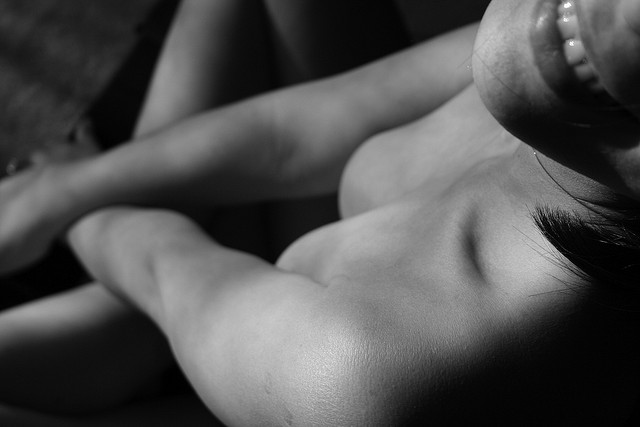My partner and I had a huge argument tonight.
It started after I shared the first draft of this article with him. My original introduction bemoaned the fact that men can take off their shirts in the sweltering summer heat while women can’t.
After my partner read my piece, he said, “But something’s not clear. Are you attempting to obliterate nipple protrusion under women’s tops..?”
Before he could finish, I launched into him. Here I was, feeling passionately righteous about gender equality, and there he was, seemingly more concerned about nipple protrusion. Instead of focusing on my battle-cry for topfree parity, he’d donned his caveman suit and nipple goggles to hone in on the detail that most interested him.
With one casual comment, he’d unwittingly spoken to the sensitive heart of the issue: Women’s breasts—particularly their nipples—are objectified. They’re so hyper-sexualized, in fact, that they’re subconsciously ogled, evaluated and apparently scrutinized for unruly mammary behavior such as nipple protrusion—even when they’re an imaginary side note in an essay.
And nipple scrutiny occurs everywhere. In social media, female nipples are branded “family un-friendly” and must be painstakingly hidden. Mothers are afraid to post breast-feeding photos on Facebook for fear of offending the nipple police.
Gosh, who knows what madness might ensue if women fully uncovered their breasts and actually showed their nipples?
Meanwhile, men’s nipples are…well, just another body part. No big deal.
And that’s why men can take off their shirts in public and women can’t.
It’s a sad and telling statement that we’ve commodified female breasts to the point where we’ve forgotten their primary function is to nourish our young, not to sell products. Through years of conditioning, especially in the media, we’ve diminished a beautiful natural body part and completely fetishized it instead.
Bras, in particular, objectify the breasts. Used as tools of seduction, bras first correct “flawed” breasts with pads, wires and gel-filled sacs; the “new and improved” versions are then served up suggestively swathed in lace and satin cages. Those who don’t wear bras for sex appeal, meanwhile, are warned that their unmanageable breasts still require proper taming. God forbid those breasts aren’t tightly contained and riding perkily high at eye-level.
As it turns out, bras aren’t even necessary for breast health. According to Jean-Denis Rouillon, a professor at the University of Franche-Comte, wearing a bra does nothing to support the chest, reduce back pain or prevent premature sagging. “Medically, physiologically, anatomically, breasts gain no benefit from being denied gravity,” he told France Info radio after conducting a 15-year study. “On the contrary, they [the breasts] get saggier with a bra.”
In 2014, the Free the Nipple movement, based on a documentary by Lina Esco, took up the fight for female topfreedom under the simple premise that women are entitled to the same topfree rights and protections that men have. Artists, First Amendment lawyers and many others have joined the cause with protests, graffiti installations and, yes, some publicity stunts. The goal is to move gender equality forward by freeing female breasts from their physical and legal constraints.
But reversing years of conditioning is a slow and uphill battle, as I realized when I finally cooled down from our fight. In everyday life, my partner doesn’t run around staring at women’s chests looking for wayward nipples. But just like me, he’s still working through old wiring and social patterns ingrained since childhood.
My partner and I never did see eye-to-eye over the main issue, but fortunately, we don’t hold grudges. So we declared a cease-fire and resolved the matter in the way that seemed fairest, given the circumstances: eye-to-eye, we both took off our tops.
Relephant:
Struggling to Break Free from the Chains: The Freedom to be a Woman. {Contemporary Risque Photography Series}
~
Author: Melinda Matthews
Image: Anthony Cain/Flickr
Apprentice Editor: Melanie Jackson; Editor: Catherine Monkman












Read 0 comments and reply